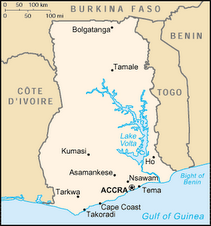Many children present with swallowed coins, caps, mango seeds and hair clips or inserted stones, seeds and pen ends in their ears and noses. Most of these foreign bodies can be removed painlessly in the clinic with the microscope, sometimes immobilizing the child in a papoose, similar to a straight jacket. Uncooperative, older, stronger children, and those patients where the removal would cause pain, require general anesthesia. Frequently the foreign bodies pass through harmlessly. Patients with draining ears and perforated eardrums are common and 80 are listed to have tympanoplasties, eardrum surgery, as soon as the operating microscope is repaired. Patients with prolonged upper airway obstruction from epiglottitis, tuberculosis or cancer of the larynx and pharyngeal abscesses, (from bones lodged in their throats), require emergency tracheostomies. Immediately following the tracheostomies, copious, frothy, mucous pours out their mouths and their oxygen saturation falls to 50% when they breath on their own, i.e. pulmonary edema. Since the wards have neither respirators nor oxygen, these patients must be stabilized and this requires three hours of diuretics, steroids and positive pressure ventilation with 100% oxygen. Most cases survive, but one mother of six died two days after her tracheostomy immediately after which she had a cardiac arrest with a flat EKG and another elderly woman now refuses a curative laryngectomy, because she believes she will not survive. Surprisingly this woman never smoked nor used tobacco.
My biggest concern is an inoperative Zeiss microscope preventing me from performing ear surgery. When the microscope, which was still set to 110 volts, was plugged into the 220-volt outlet, its transformer was ruined. A new transformer, from 220 volts, 50 cycles to 6 volts, 30 watts is needed to power its light bulb. Supposedly Zeiss does not supply this transformer anymore. They may have a conversion kit to a fiberoptic lighting system. I have one working microscope in the clinic, but it would be foolhardy to frequently transport this microscope up two flights to the operating room for surgery, as it will quickly break. It is a necessity to have one microscope in the operating room and one in the clinic. Any help in quickly fixing this problem in order to perform ear surgery would be appreciated.
Surprisingly, two unplanned accomplishments have been the organization of a physician’s Wednesday scientific Clinical Conference and the shipment of two forty foot containers with medical equipment and supplies. At the hospital there were no medical meetings, little communication among the physicians and hard feeling between the physicians and the administration. The rapport was less than low. Now, with the Clinical Conferences, there are discussions on improving patient care, lunches with the administration and excellent exchange of knowledge. Even Ghana’s governing medical body, the Ghana Council of Medicine and Dentistry, has applauded the quality of our Clinical Conferences. The other accomplishment involved countless kind hearted, hard working Rotarians contributing $15, 000 to pay the expense of shipping two forty foot containers of medical supplies and equipment supplied by project CURE, value 800,000, to Tamale Teaching hospital. Every hospital physician listed their urgent needs and project CURE will try to comply. The poor patients of northern Ghana sincerely thank everyone; the relief of suffering and the cures these efforts will produce are immeasurable. Because this blog is public, names are not mentioned, but the praise and appreciation is great.

